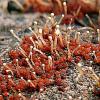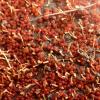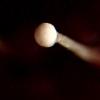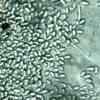
07-12-2025 16:07
Arnold BüschlenHallo, ich habe in einer Moos-Aufsammlung (epiohy

05-12-2025 17:33
 Bruno Coué
Bruno Coué
Bonjour, je serais heureux de recueillir votre avi

07-12-2025 09:24
De la pasada semana en Galicia EspañaEn el suelo

06-12-2025 00:19
 Viktorie Halasu
Viktorie Halasu
Hello, would anyone have this article, please? An

02-12-2025 18:59
This pair of ascos 2.5cm across were on recently b
Nectria stilbellae
is classified in Nectria subg. Dialonectria SACC.(SAMUELS & al., 1991). Species in this group are characterized by
having superficial, usually smooth, red perithecia the wall of which
is less than 25 urn wide.
Nectria stilbellae is distinguished primarilyby its anamorph and is most closely related to
N. consors (SAMUELS,1977),
N. camelliae (SHIPTON) BOESEWINKEL (SHIPTON, 1979; BOF.SEWINKEL,1982), and the
Nectria species that haveDescription ettsils in: http://www.landesmuseum.at/pdf_frei_remote/Sydowia_43_0249-0263.pdf
The anamoph, sTilbella aciculosa (ELLIS & EVERHART) SEIFERT have Conidia ellipsoidal-fusiform5—7(-9) x 2.5-3 microns.
This fungi was reported in Panama and cta RIca by SEifert. in 1985; SEIFERT, K.A. (1985). A monograph of
Stilbella and some allied hyphomycetes. - Stud.Mycol. 27: 1-235.
262

Your fungus looks like Nectria pseudotrichia, what is the size and shape of ascospores?
Christian

Are the ascomata changing of color in 3% KOH or lactic acid? if so, what is this coloration?
Moreover, could you please to say what is the size of conidia and provide an image of the ascospores?
Christian





